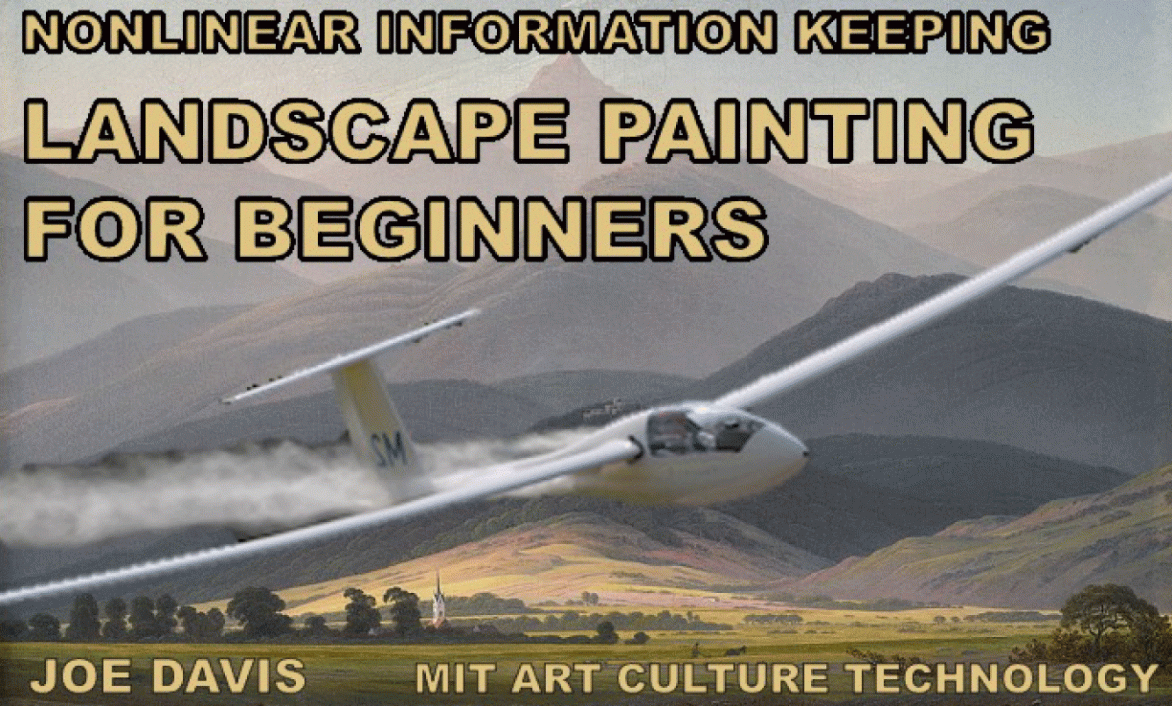On Monday, September 18, ACT and the Center for Art, Science, and Technology (CAST) will host “Landscape Painting for Beginners: Non-linear Information Keeping,” an Artistic Inquiry gathering with Joe Davis, hosted by Cassandra Guan.
About Joe Davis:
While earning his Creative Arts degree (1973) from Mt Angel College in Oregon, Joe Davis pioneered sculptural methods in laser carving at Bell Telephone Laboratories and University of Cincinnati Medical Center Laser Laboratory. In 1981, he joined MIT Center for Advanced Visual Studies as Research Fellow and Lecturer. Davis’ work has had strong focus in astrobiology and the search for extraterrestrial life. In 1986, Davis created Microvenus, the first genetically engineered work of art. His Poetica Vaginal (1986-7) and Rubisco Stars (2009), have been the most powerful and longest-duration radio messages ever transmitted to other stars.
Davis joined Alexander Rich’s laboratory at MIT in 1989 where he is widely regarded to have founded new fields in art and biology. While at Rich Lab, Davis attached fishing rods and miniscule fishhooks to his microscopes and developed other whimsical instruments to resolve mechanical and acoustic signatures of microorganisms. His projects involving “DNA programming languages” for inserting poetic texts and graphics into DNA have been frequently cited in scientific literature. In 2010, he joined the laboratory of George Church at Harvard as “Artist Scientist.” In 2011, Davis worked with collaborators at Harvard and the Japanese National Institute of Agrobiological Sciences to genetically modify silkworms in order to produce transgenic silks bio-mineralized with metallic gold.
Davis enjoys simultaneous affiliations with Ashley Seifert Laboratory at University of Kentucky, where he and colleagues have been investigating genetics of serendipity using mouse-driven mechanical dice-throwing apparatus, and with Thomas Schwartz Laboratory at MIT Biology where he produced the world’s first macroscopic “memory crystals” of information-bearing DNA in 2017. In 2019 Davis collaborated with colleagues at Harvard, MIT, the Indian National Center for Biological Sciences, and SK Biolabs in Moscow, Russia to insert 3-, and 4-dimensional data into extremely robust, salt-loving organisms. Davis’ information-keeping extremophiles are now embedded into crystals of mineral salt where they are expected to persist for hundreds of millions of years. Davis has also created large public sculpture and pedestrian lighting at Kendall Square in Cambridge, Massachusetts. Other works are currently installed at MIT Museum and in private collections worldwide.
Part of the Artistic Inquiry Luncheon Series 2023-2024.



